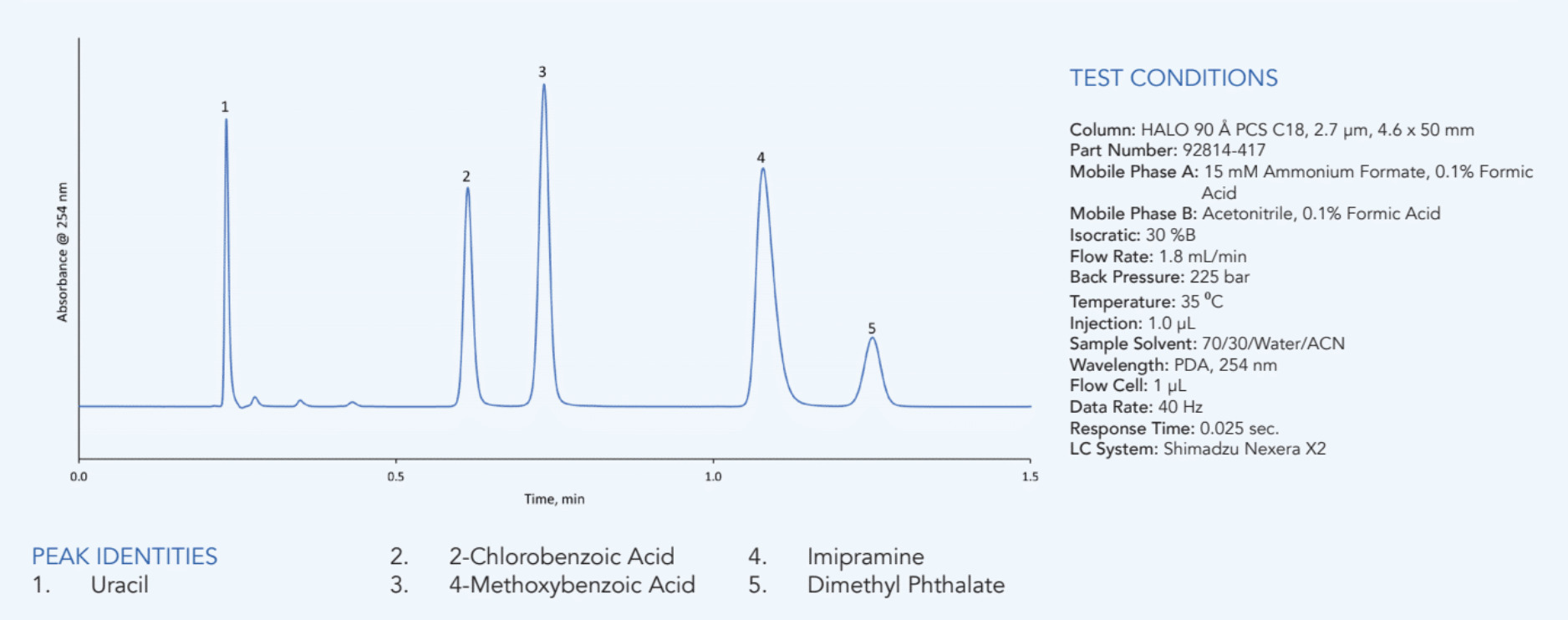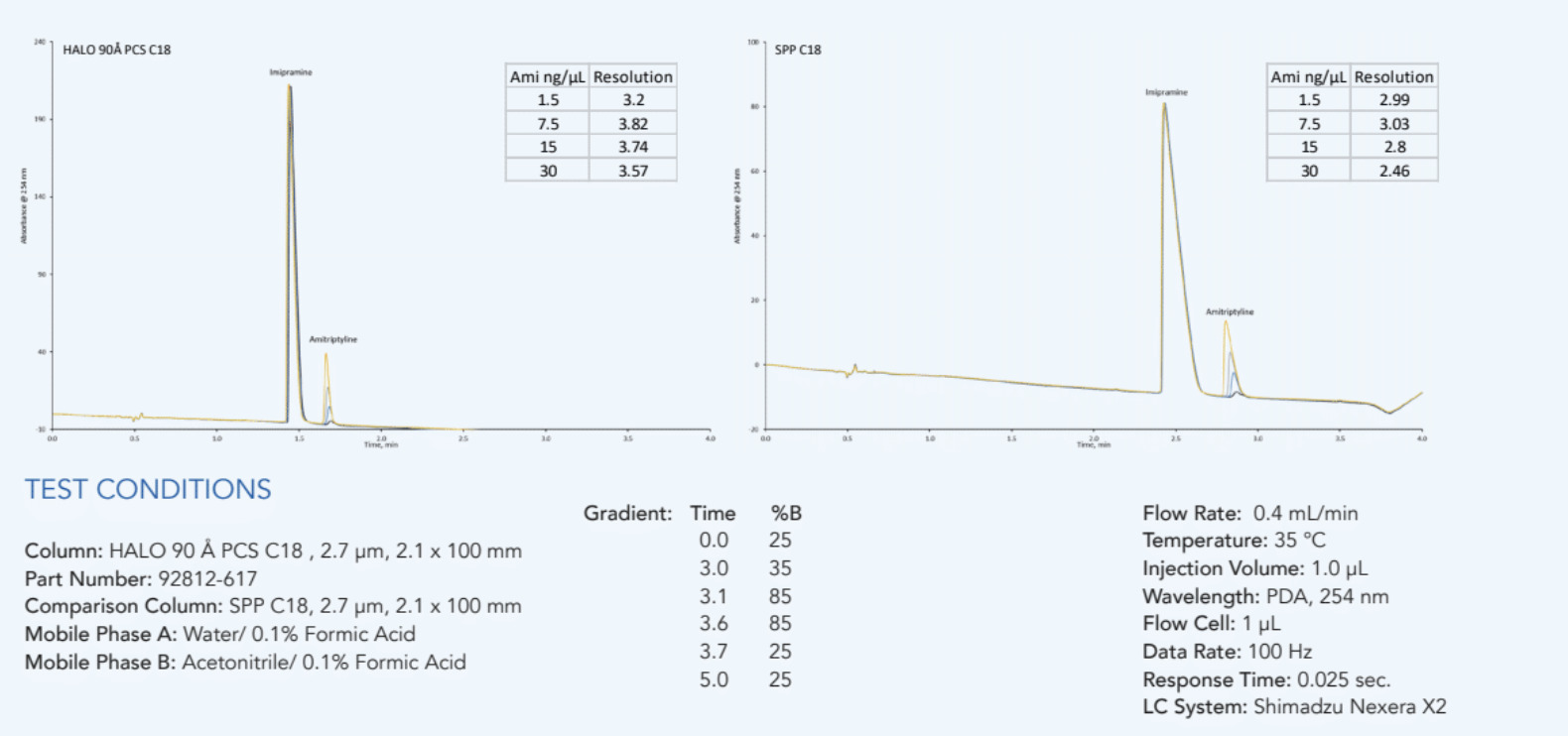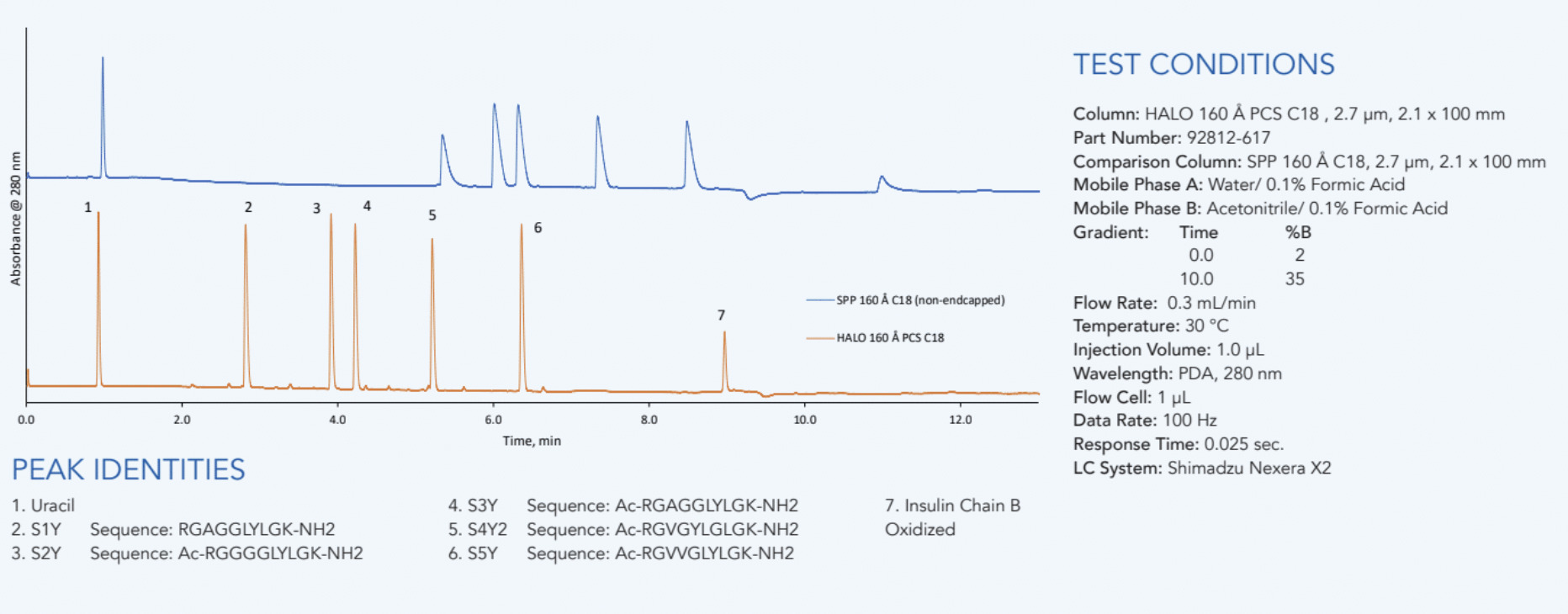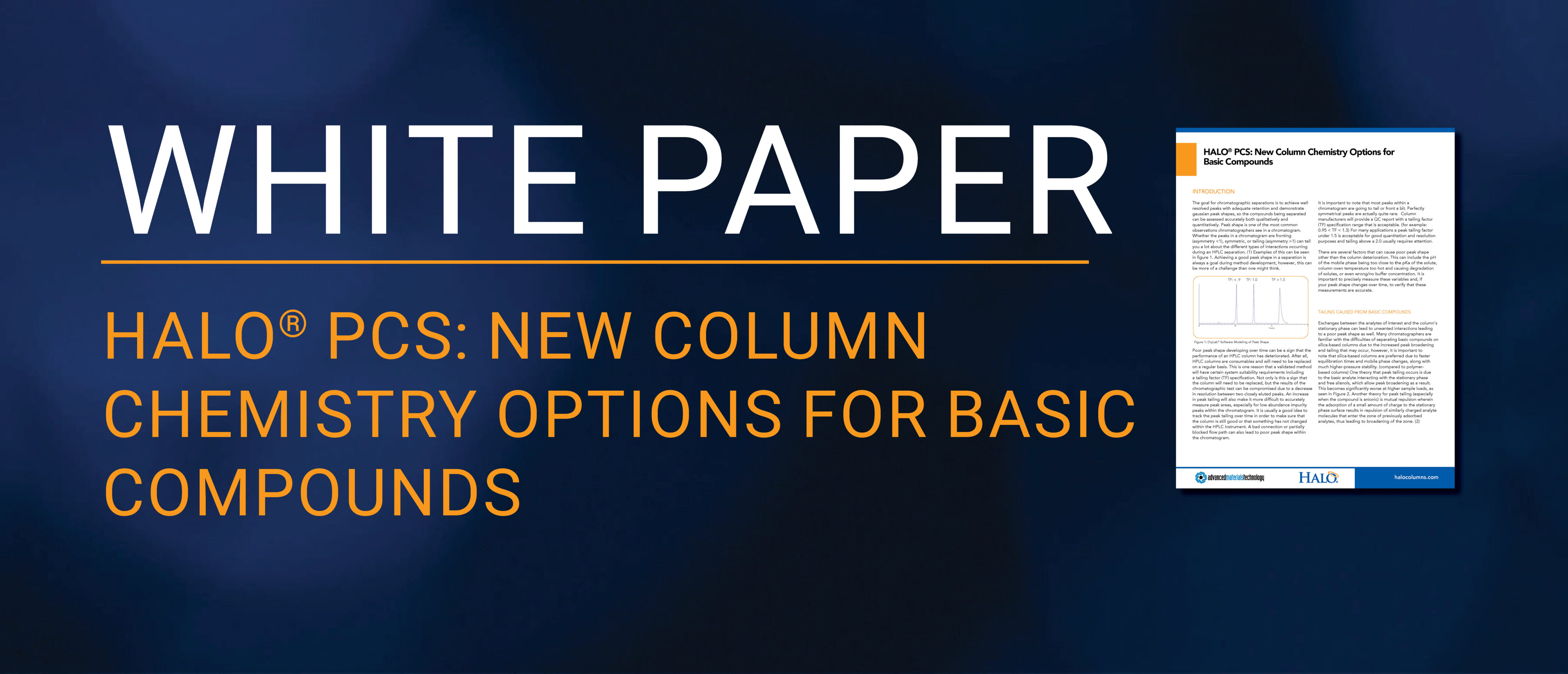AUTHOR: Stephanie Schuster, PhD, Senior Technical Support Scientist, Advanced Materials Technology 20 Years of High…

What to Expect from HALO ® PCS C18
THE POSITIVES OF PCS
The new HALO®PCS C18 phase offers an alternative to chromatographic separations under acidic conditions. Many chromatographers are familiar with the difficulties of separating basic compounds. These compounds are troublesome and usually elute from the column with a tailed peak shape making higher loads on the column nearly impossible to deal with. With the new line of HALO®PCS C18 columns, built on Fused-Core®technology, chromatographers can trust in fast and efficient separations of basic compounds in both small molecule and biological separations.
CHARACTERISTICS OF PCS C18
What does PCS stand for? Sometimes phases are labeled with acronyms that don’t make sense, but in the case of PCS, it is quite straightforward. PCS stands for positively charged surface. The surface chemistry of PCS C18 is designed to deliver improved peak shapes for basic compounds which can be difficult to deal with on standard C18 phases when running with a low ionic strength mobile phase. This is the case for LCMS-friendly methods that use formic acid. You may think that improved peaks shape for basic compounds comes at a price, but we kept this in mind when designing PCS C18. Acids and neutrals will be unaffected by the PCS C18 phase making it a great tool for multi-component samples. This can be seen below in Figure 1 and is part of the QA test which accompanies every HALO®PCS C18 column.
Figure 1: QA Test: A mixture of acidic, basic, and neutral compounds are screened on a HALO®PCS C18 column to show how basic analyte peak shape is symmetrical while neutral and acidic peak shapes remain unaffected.

Can this surface chemistry be used with standard mobile phases like water and acetonitrile? PCS C18 can be run with most standard mobile phases, but does rely on acidic conditions to make use of the charged surface interaction. By running under low pH conditions, the basic compounds gain a proton becoming positively charged and repel from the positively charged surface of PCS. With the reduced retention of the basic compounds, tailing is reduced, but the strength of the organic mobile phase may need to be reduced to have adequate retention.
Perhaps you are thinking that, well, better peak shape is great, but I can achieve symmetrical peak shapes on standard C18 with smaller sample load. What happens if I need to put more sample on column? Will PCS C18 be able to help with this? In fact, PCS C18 performs better at higher loading capacities than standard C18 phases. This allows chromatographers to inject more sample on column and maintain peak symmetry. This can be especially helpful when looking for impurities in basic pharmaceuticals. Take Figure 2 below, a separation of imipramine and amitriptyline is performed on both a HALO 90 Å PCS C18 and a SPP C18 column. By increasing the concentration of amitriptyline, but keeping the concentration of imipramine constant, we can demonstrate how peak shape can be affected as load is increased on each type of surface chemistry. You may be wondering, well, those concentrations are quite low and there is already a large amount of tailing for the C18 phase. This is exactly where the PCS C18 phase comes in handy. The PCS phase still has low tailing at these concentrations and as concentrations increase the peak shape will only get much worse for standard C18 whereas PCS will be more resistant to the increased tailing of larger sample loads.
Figure 2: A separation of imipramine and amitriptyline is performed on both a HALO 90 Å PCS C18 and a SPP C18 column.

The concentration of the imipramine is held constant while the concentration of the amitriptyline is increased. Overlays of injections with increased amitriptyline concentrations are included to show how the increase in sample load affects the peak shape and resolution of the chromatogram. A table is also included for each column to show the concentrations of amitriptyline and the change in resolution for each increase in concentration.
The HALO®PCS C18 column is more resistant to a change, under low ionic conditions, in peak shape and concentration compared to the SPP C18 column.
WHAT ABOUT MY PEPTIDE SEPARATIONS?
How about biological samples such as basic peptides? We have also thought about this! The HALO®PCS C18 is also available in a 160 Å pore size making it ideal for peptides. Peptides can be difficult to deal with especially when trying to run a separation using MS detection. Formic acid conditions for peptides can cause tailing for standard C18 phases. This forces chromatographers to become creative with their mobile phase additives, whether it is adding salts or mixing DFA and FA in order to get better peak shapes. By using the HALO®PCS C18 for peptide separations, chromatographers can run under formic acid conditions and maintain symmetrical peak shape. Figure 3 below shows how important this positively charged surface chemistry can be for peptide separations. The peptides on the SPP C18 column are significantly tailed under formic acid conditions compared to the HALO 160 Å PCS C18 column where no tailing can be observed.
Figure 3: A synthetic peptide panel is screened on 160 Å PCS C18 compared to a C18 stationary phase. While using low ionic strength mobile phases such as formic acid the positively charged surface stationary phase shows narrower peak widths and improved peak symmetry when compared to a traditional peptide C18 stationary phase.

CONCLUSIONS
In summary, the HALO®PCS C18 stationary phase opens up options for chromatographers as a surface chemistry that can improve basic separations not only for small molecules, but for peptides as well. While peak shape will improve for these basic compounds, remember that retention may be reduced compared to standard C18 phases. This means you must be aware of how much organic will be used in each separation. HALO®PCS C18 should also be used under acidic conditions to benefit from the positively charged surface. HALO®PCS C18 is a helpful addition to MS method development, allowing for the use of formic acid, meaning higher ionization efficiencies, without sacrificing peak shape and instrument contamination. The efficiency of the Fused-Core®particle along with the utility of the HALO®PCS C18 phase deepens the chromatographer’s toolbox.



